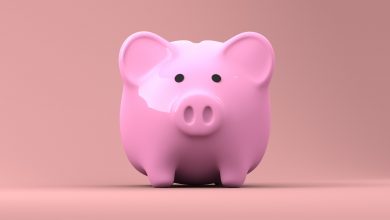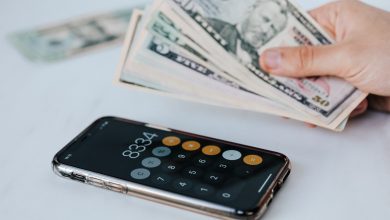
It doesn’t seem to matter who you are or what you do. A college education is likely to require you to take on student loan debt. In fact, just a few short years ago, in 2017, 65 percent of all college seniors graduating from college had almost $30,000 in student loans.
College expenses can range from books, tuition, room and board, meal plans, and other fees. It can take over $21,000 a year to pay for all of those things, and most students, along with their families, just can’t afford that much out of pocket.
Of course, there are financial aid options, including grants and scholarships, but student loans are another thing that most students have to consider. To do this though, they must first complete their FAFSA (Free Application for Federal Student Aid). Still, you may be unaware that federal student loans come in different varieties. You could be offered multiple loan options with your specific financial aid package based on your financial situation.
The two most common options for federal student loans include Direct Unsubsidized and Direct Subsidized Loans. They sound very similar, and there are a few similarities. Still, they are profoundly different than each other. The difference between subsidized and unsubsidized loans could translate into more interest payments that are higher (thousands of extra dollars spent over the lifetime of the loan).
It is important to understand how these two types of loans are similar and different. We discuss both unsubsidized and subsidized federal student loans, which allows you to make smarter financial decisions. You can then apply this information when accepting or denying student loans in your financial aid package. Plus, you are also going to be more aware of which loans should be priority in regards to paying them off.
A Snapshot of Subsidized and Unsubsidized Student Loans
Both unsubsidized and subsidized student loans are options available and offered to college students from your federal government. Therefore, the specifics of each type of loan – which includes fees, interest rates, eligibility requirements, and maximum borrowing limits – are governed by the laws.
Yes, there are some similarities, but there is also a significant difference between subsidized and unsubsidized loans for students. The biggest difference is how interest can accrue on the loan.
Direct Subsidized Loans are only available to undergraduate students, and to qualify, you must demonstrate that you have a significant financial need for the loan. The federal government is going to cover any accrued interest on your principal as well but only under specific conditions. These include:
- When you’re enrolled in college part or full time
- When the loan is on deferment
- During the grace period
- This is the first six months after you complete your schooling, drop out, or fall below part-time status. During this time, you don’t have to make payments, and your interest is either halted or paid for by the federal government.
Because the Department of Education pays any interest that has accrued on the principal during this time, it is subsidizing the education.
On the other hand, Direct Unsubsidized Loans are going to accrue interest, just like any other loan type. Once the loan is disbursed (you or your school receives the money), the principal begins accruing interest. It doesn’t matter if you are currently enrolled in college, if you’re in deferment, or if the loan is in a grace period.
While you do not have to pay the interest as it adds up, it is still added to the principal or capitalized. Therefore, the interest is going to start accruing interest for itself, as well as your principal.

See the Difference Between Subsidized and Unsubsidized Loans in Action
It can be a little challenging to understand the process without crunching some numbers. Therefore, let’s say that there are two borrowers. Both are in the first year of college and take out a federal student loan for $3,500. Each loan carries an interest rate of about 4.53%, and they are both on the standard ten year repayment plan. However, Borrower A has a subsidized loan, and Borrower B has an unsubsidized loan.
Borrower A isn’t going to have accrued interest while they’re in school, so the balance isn’t going to rise. Then, after graduation, they only have to pay $36.32 monthly. In total, Borrower A is going to pay $4,358 on the loan with $858 of that being interest.
Borrower B has a loan that starts accruing interest throughout the four years they are in college. This is about $634. They graduate, but they can’t pay on the interest that has accrued. Therefore, it’s capitalized and added to the principal amount, bringing the loan balance to $4,134. That means that Borrower B is going to make payments of $42.90 each month, repaying a total of $5,148. Borrower B paid almost $800 more than Borrower A.
Now, what could happen if both borrowers couldn’t make their payments immediately when they graduated? They both have that six-month grace period and could also place the loan into deferment for a full 12 months after that.
If this happens, Borrower A is still going to have a loan balance of $3,500 and is going to repay $4,358 throughout the life of the loan. However, Borrower B is going to have a balance that grows to $4,420, so they are going to repay $5,504 throughout the life of the loan. That’s a difference of over $1,000.
How Subsidized Student Loans Work
There are two things to consider for subsidized student loans, including fees and interest.
Direct Subsidized Loans that are disbursed between July 2019 and July 2020 have an interest rate of just 4.53%. The rate is fixed, so it can’t change throughout the life of the loan. This interest rate is set by Congress each year.
You learned earlier that interest accrues on the loan when you’re enrolled as an undergraduate going to school at least part-time, during deferment periods, and when you’re in the grace period. If you’re in forbearance (the act of temporarily pausing the payments for financial reasons) or in active repayment, the amount is accruing interest.
You’ve also got other fees with which to deal. Direct Subsidized Loans that are disbursed between October 2019 and October 2020 are going to have a loan fee of 1.059%, which is added to the principal.
Who Can Qualify for a Direct Subsidized Loan?
To qualify to get a Direct Subsidized Loan, you have to submit your FAFSA application. There are limited funding amounts available for each school year on subsidized loans. Therefore, only applications demonstrating a specific financial need are eligible to get such a loan.
Other requirements include being an undergraduate, going to a qualifying college, and being at least part-time. There are no cosigners needed, and you don’t have to pass a credit check to be approved.
Maximum Subsidized Loan Amounts
For 2019, through your undergraduate career, it’s possible to borrow $23,000 on subsidized student loans if you’re eligible. Exact amounts you can receive can vary from year to year. Consider this: Your first year, you may only get $3,500, but in the second year, you receive $4,500. All other years of your undergraduate college career, you get $5,500.

How Unsubsidized Student Loans Work
Unsubsidized student loans are disbursed to undergrads as well. As of the 2019-2020 school year, they also offer interest rates of 4.53%. Graduate and professional students are also eligible to receive unsubsidized student loans with interest rates of 6.08%. All rates are fixed, so they aren’t going to change through the life of the loan. Congress also determines the loan rates each year, as with subsidized student loans.
However, unlike a subsidized student loan, the unsubsidized loan accrues interest while the loan is in the grace period. Interest also accrues while you’re enrolled in classes, as well as during deferment, repayment, and forbearance periods. If you can’t pay accrued interest, it’s capitalized and added to the loan principal.
Fees for Direct Unsubsidized Loans are 1.059% through the 2019 and 2020 years.
Who Can Qualify for a Direct Unsubsidized Loan?
To qualify for Direct Unsubsidized Loans, you have to submit your FAFSA application. However, unlike subsidized loans, these loans don’t require you to show a financial need to obtain them. They’re available to professional, graduate, and undergraduate students, regardless of your credit score or history.
Maximum Unsubsidized Loan Amounts
As with a subsidized student loan, there’s a maximum amount of debt you can carry from the federal government. Exact amounts depend on your degree type (professional, graduate, or undergraduate), as well as dependent status (for undergraduates).
Undergraduate, dependent students can borrow up to $31,000 throughout their undergraduate career in unsubsidized loans. Likewise, if you qualify for the $23,000 maximum in subsidized loans, you can then borrow $8,000 in an unsubsidized loan.
Exact amounts do vary. For example, in the first year, you could get $5,500, while in the second year, you could receive $6,500. Subsequent years can offer $7,500.
Undergraduate, independent students can borrow up to $57,500 throughout their undergraduate career in unsubsidized loans. This means if you qualify for $23,000 in subsidized loans, you can borrow up to $34,500 in an unsubsidized loan.
Again, the exact amounts vary. You might receive $9,500 for the first year and get $10,500 the second year, with subsequent years bringing you $12,500.
Graduates and professionals can borrow up to $138,500 in unsubsidized loans throughout their entire educational career, which includes the undergraduate courses. It’s possible to borrow up to $20,500 in unsubsidized loans every year of your professional or graduate status.
Which Is Best?
You may be wondering which option is most preferable. You’ve learned the difference between subsidized and unsubsidized loans. Therefore, you can see that a subsidized loan offers many benefits over an unsubsidized one. If you could receive both loan types, it is ideal to choose the subsidized loan options first.
However, both unsubsidized and subsidized loans are more agreeable than private student loans because federally-backed loans are going to have a lower interest rate. You are also going to be more protected than you might be with a private lender.
If you’ve got both federal student loan types, it’s best to make interest-only payments on the unsubsidized loan every month, regardless of whether you’re in forbearance, deferment, or grace periods, or while you’re a student. This helps you avoid interest capitalization so the loan balance doesn’t continue to grow. You may also want to pay off any unsubsidized loans first, if possible.



